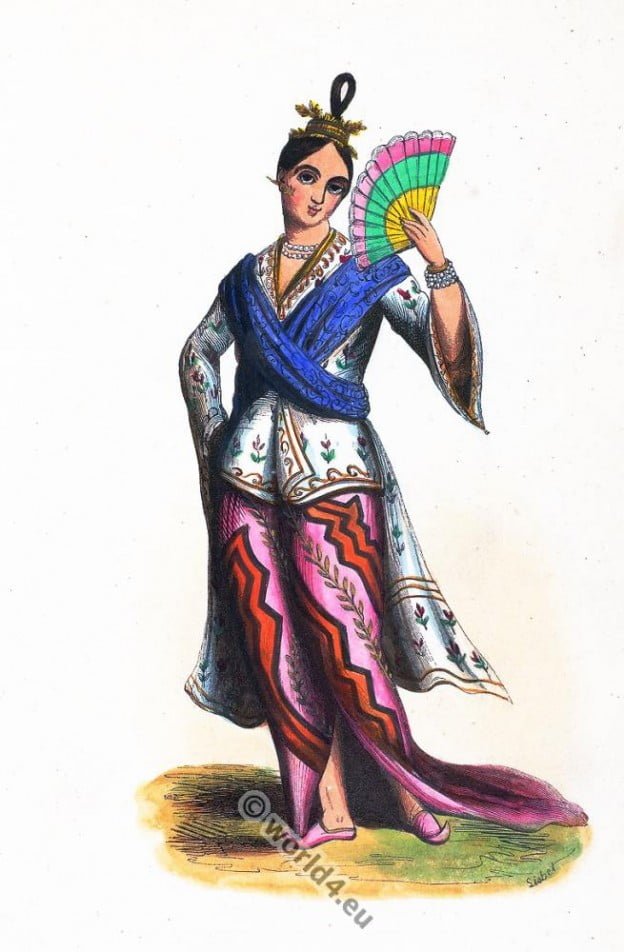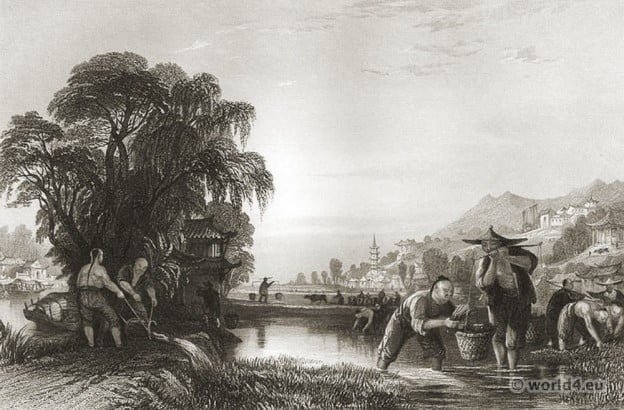Vietnam Soldiers costume, 1843. Naturel et Soldat Cochinchinois. Gallery: Asian costumes by Auguste Wahlen. Manners, customs and costumes of all peoples of the world.
Category: Asia
Costume and fashion history of Asia. Manners and Customs. Collected from rare sources.
Vietnam Soldier costume in 1843. Cohinchinois military.
Vietnam Soldier costume 1843. Soldat Cohinchinois. Cochinchina, French Cochinchine, Vietnamese Nam Kỳ (from Chinese 南圻, “southern border”) is an old name for southern Vietnam and parts of eastern Cambodia, between… Read More
Termination of the Great Wall of China. The Gulf of Pecheli.
In a previous description of the Great Wall of China, the particular view here given is alluded to and described.
Traditional Carian Anatolia costume, 1843.
Traditional Carian Anatolia costume, 1843. Gallery: Asian costumes by Auguste Wahlen. Manners, customs and costumes of all peoples of the world.
Noble Burmese woman costume.
Noble Burmese woman costume. Myanmar 1843. Noble Birmane
Armenian merchant costume.
Armenian merchant costume 1843. Marchand Armenian Gallery: Asian costumes by Auguste Wahlen. Manners, customs and costumes of all peoples of the world.
Armenian Costume. Young girl. Jeune fille Arménienne.
Jeune fille Arménienne. Asian costumes by Auguste Wahlen. Manners, customs and costumes of all peoples of the world.
Chinese archer of the flying dragons, or called scudding clouds.
The Chinese “braves” are employed to aid the civil magistrates as policemen, to act as custom- house officers at the military stations, along the roads, rivers, and canals; and also to mount guard at the city gates.
Se Tseaou Shan, or “The Western Sacred Hills” of Guangxi.
Se Tseaou Shan, or “The Western Sacred Hills” of Guangxi. China, in a series of views, displaying the scenery of that ancient empire.
Rice cultivation at Suzhou, China. Transplanting and Sowing in 1843.
Rice cultivation in ancient China. Landscape, Architecture, Costumes, Temples, Palaces, Manners with description.










